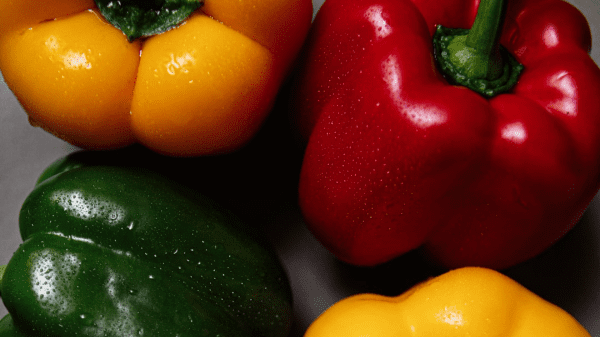
Somewhere in Mexico there has to be a billboard that says, Bienvenido a la tierra de los pimientos.
Welcome to the land of peppers.
Mexico dominates the multiple growing regions when we look at total volume for our multi-colored friend. Overall, bell peppers continue to gain ground as a way to spice things up, especially now that a lot of us are becoming culinary experts at home.
Making up 60 percent of the total volume, Mexico has produced more volume than the other 23 regions combined and is up nearly 15 percent vs. last year. Our participation trophy goes to Grenada, who has provided us with 444 pounds of precious peppers this year.
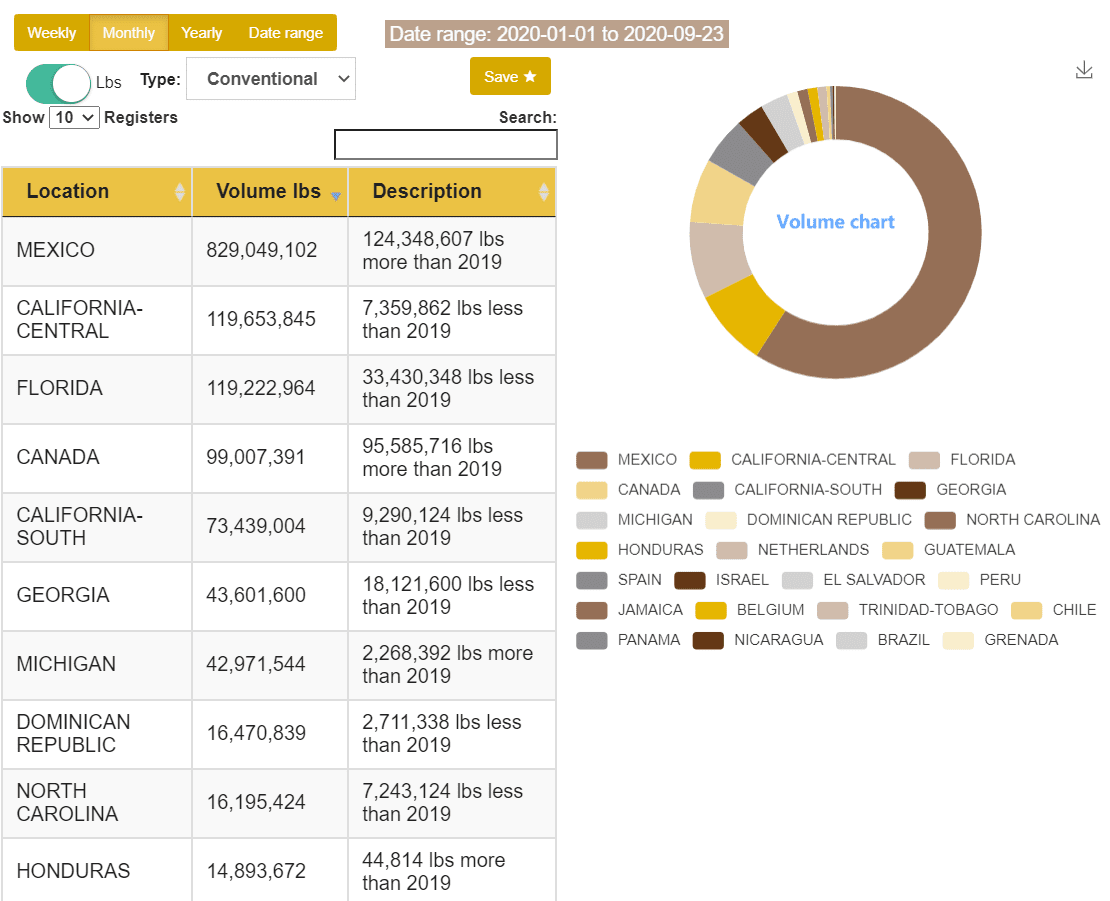
Blue Book has teamed with Agtools Inc., BB #:355102 the data analytic service for the produce industry, to look at a handful of crops and how they’re adjusting in the market during the pandemic.
Looking back at the last seven years, volume has never been higher, thanks to Mexico. Even after seeing a dip following the pandemic, bell peppers rebounded and continue to thrive.
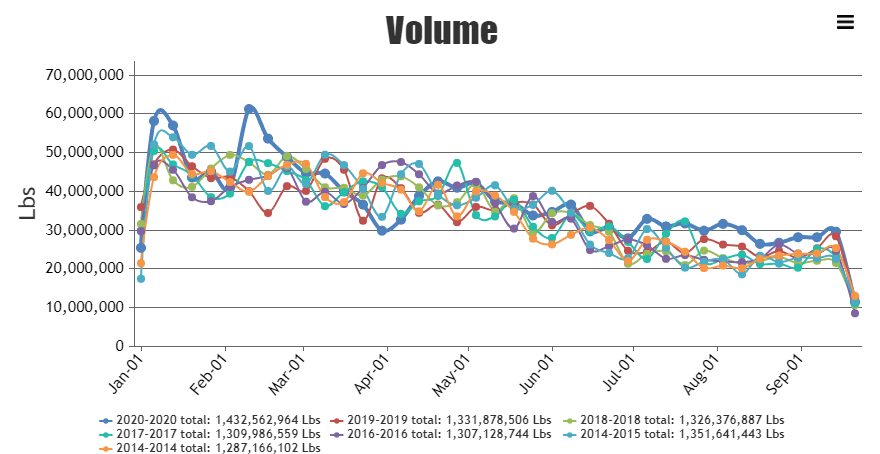
When we take Mexico out of the equation, and look at domestic product only, we see a slightly different story. Volumes domestically at a seven-year low.
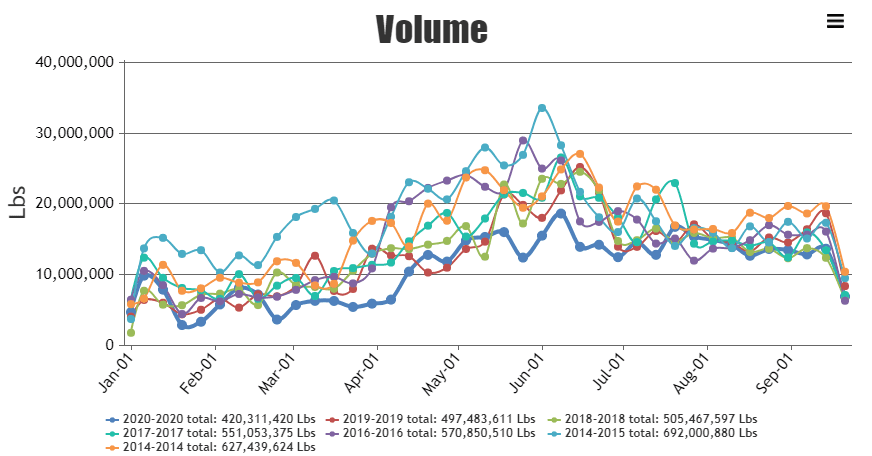
So, what has been happening the last few weeks? Mexico continues to push volume, up nearly 20 percent vs. 2019, while the next two players, Central California and Michigan, are down in volume.

With volume down, the assumption would be pricing would be up from Michigan and you would not be disappointed. While a Michigan jumbo green pepper carton could be purchased around $9 in 2019 and $14 in 2018, today it will cost you close to $25.

As expected, all sizes are on the rise as the volume continues to slow down:
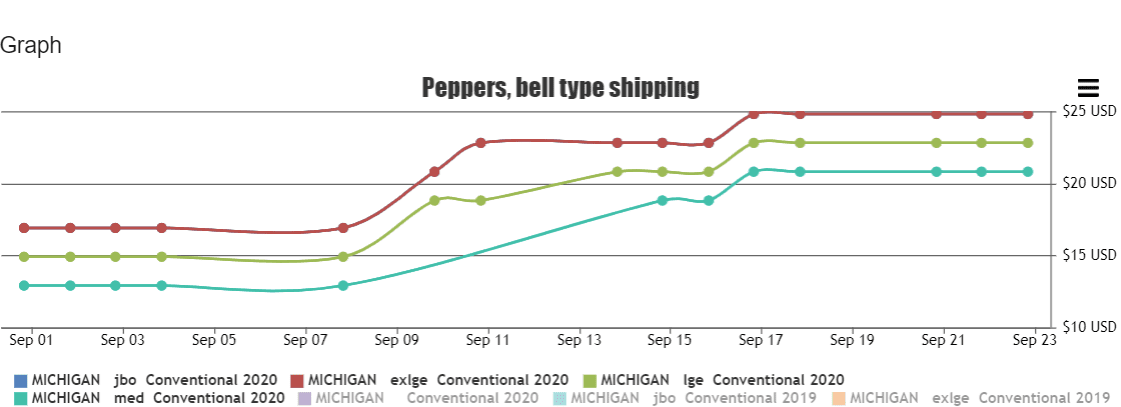
Looking behind to look ahead, Mexico will continue to dominate the volume, while Georgia, Florida, and California will provide a little variety to this growing category.
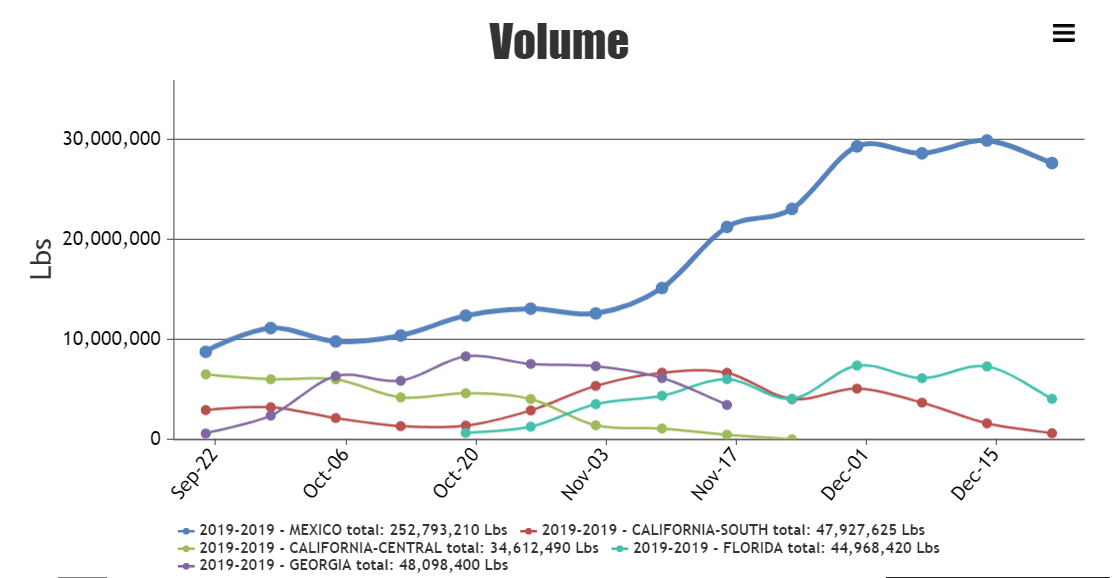
Somewhere in Mexico there has to be a billboard that says, Bienvenido a la tierra de los pimientos.
Welcome to the land of peppers.
Mexico dominates the multiple growing regions when we look at total volume for our multi-colored friend. Overall, bell peppers continue to gain ground as a way to spice things up, especially now that a lot of us are becoming culinary experts at home.
Making up 60 percent of the total volume, Mexico has produced more volume than the other 23 regions combined and is up nearly 15 percent vs. last year. Our participation trophy goes to Grenada, who has provided us with 444 pounds of precious peppers this year.

Blue Book has teamed with Agtools Inc., BB #:355102 the data analytic service for the produce industry, to look at a handful of crops and how they’re adjusting in the market during the pandemic.
Looking back at the last seven years, volume has never been higher, thanks to Mexico. Even after seeing a dip following the pandemic, bell peppers rebounded and continue to thrive.

When we take Mexico out of the equation, and look at domestic product only, we see a slightly different story. Volumes domestically at a seven-year low.

So, what has been happening the last few weeks? Mexico continues to push volume, up nearly 20 percent vs. 2019, while the next two players, Central California and Michigan, are down in volume.

With volume down, the assumption would be pricing would be up from Michigan and you would not be disappointed. While a Michigan jumbo green pepper carton could be purchased around $9 in 2019 and $14 in 2018, today it will cost you close to $25.

As expected, all sizes are on the rise as the volume continues to slow down:

Looking behind to look ahead, Mexico will continue to dominate the volume, while Georgia, Florida, and California will provide a little variety to this growing category.

Matt DeBoer is senior vice president for Agtools in the Retail Category and former VP of Sales for Del Monte Fresh.










